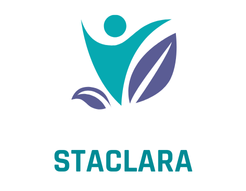The Paleo Diet offers a promising avenue for those grappling with Hashimoto's Thyroiditis. Packed with nutrient-dense foods, this approach can help reduce inflammation and stabilize thyroid function. By emphasizing whole, unprocessed ingredients, individuals may experience a noticeable alleviation of symptoms. Explore how this dietary shift not only improves health but empowers you to regain control over your well-being. Your journey towards relief starts here.
Understanding Hashimoto's Thyroiditis
Exploring the complexities of an autoimmune condition
Also read : Navigating anxiety disorders: understanding and overcoming fear
Overview and Impact
Hashimoto's Thyroiditis is an autoimmune disease where the immune system mistakenly attacks the thyroid gland. This can lead to hypothyroidism, affecting metabolism and overall health. Individuals with this condition often experience fatigue, weight gain, and sensitivity to cold. It is crucial to understand the relationship between symptoms and lifestyle, particularly diet, to manage the disease effectively.
Common Symptoms and Dietary Relations
The symptoms of Hashimoto's Thyroiditis vary but often include tiredness, depression, and muscle weakness. These symptoms can sometimes be alleviated by dietary adjustments. For instance, a diet rich in selenium and iodine may support thyroid function. However, it's important to consult with healthcare providers before making significant dietary changes.
Also read : Exploring the Power of Virtual Reality Therapy in Overcoming Phobias
Autoimmune Nature and Dietary Considerations
As an autoimmune disease, Hashimoto's requires careful dietary consideration. Some studies suggest that gluten-free diets may benefit those with Hashimoto's, as gluten can sometimes exacerbate autoimmune reactions. A focus on anti-inflammatory foods can also be beneficial.
- Common Symptoms:
- Fatigue
- Weight gain
- Cold intolerance
Understanding these aspects of Hashimoto's Thyroiditis can empower individuals to make informed decisions about their health and lifestyle.
Introduction to the Paleo Diet
Delving into a nutritional approach rooted in ancestral eating habits
Core Principles
The Paleo Diet is based on the premise of eating foods that our ancestors might have consumed during the Paleolithic era. This nutritional approach emphasizes whole, unprocessed foods, including lean meats, fish, fruits, vegetables, nuts, and seeds. By focusing on these core principles, the diet aims to eliminate processed foods, grains, legumes, and dairy, which are believed to contribute to modern health issues.
Comparison with Other Dietary Approaches
When comparing the Paleo Diet to other dietary approaches, it stands out due to its emphasis on natural, nutrient-dense foods. Unlike the Mediterranean diet, which includes whole grains and dairy, the Paleo Diet strictly avoids these. It also differs from vegetarian diets by including animal proteins, which are seen as essential for optimal health in this nutritional approach.
Nutritional Benefits
Adherents of the Paleo Diet often report benefits such as improved energy levels and weight management. This nutritional approach can also support a balanced intake of macronutrients, emphasizing protein and healthy fats while reducing refined sugars and carbohydrates.
- Core Foods:
- Lean meats
- Fruits and vegetables
- Nuts and seeds
By understanding these elements, individuals can make informed decisions about adopting this dietary lifestyle.
Foods to Include in the Paleo Diet for Hashimoto's
Nutrient-dense choices for autoimmune health
Approved Foods for Hashimoto's
For those managing Hashimoto's, incorporating specific Paleo foods can be beneficial. The emphasis on nutrient-dense foods supports overall health and may alleviate symptoms associated with autoimmune conditions. Consider adding the following to your diet:
- Lean Meats: Grass-fed beef, free-range poultry
- Fish: Wild-caught salmon, sardines
- Vegetables: Leafy greens, broccoli, cauliflower
- Fruits: Berries, apples, bananas
- Nuts and Seeds: Almonds, walnuts, chia seeds
Importance of Nutrient-Dense Foods
Nutrient-dense foods are crucial for those with autoimmune conditions like Hashimoto's. These foods provide essential vitamins and minerals that support thyroid function and overall well-being. By focusing on healing foods, individuals can help reduce inflammation and support immune health.
Tips for Sourcing High-Quality Paleo Foods
Finding high-quality Paleo foods is essential for maximizing the health benefits. Look for organic produce and sustainably sourced proteins. Farmers' markets and local co-ops often offer fresh options. Prioritize foods that are minimally processed to maintain their nutrient-dense properties.
By integrating these healing foods into your diet, you can support your health journey with confidence and ease.
Foods to Avoid on the Paleo Diet
Navigating dietary choices for autoimmune health
Common Hashimoto's Triggers
Avoid Foods that can exacerbate symptoms of Hashimoto's. Certain inflammatory foods are known to trigger autoimmune responses. These include processed grains, refined sugars, and dairy products. Consuming these can lead to increased inflammation and discomfort. It's crucial to recognize these triggers to manage your condition effectively.
Why Certain Foods Are Avoided
The Paleo Diet emphasizes eliminating foods that contribute to inflammation and poor health. Inflammatory foods like legumes and processed oils are avoided because they can interfere with optimal thyroid function. By removing these from your diet, you can support a healthier immune system and reduce the likelihood of flare-ups in Hashimoto's.
Strategies for Navigating Food Choices
Making informed food choices involves understanding labels and ingredients. When shopping, focus on whole, unprocessed options. A simple bulleted list can guide you:
- Check for hidden sugars
- Avoid artificial additives
- Prioritize organic produce
Reading labels carefully helps in identifying Hashimoto's triggers and inflammatory foods. By adopting these strategies, you can confidently navigate your dietary journey, fostering better health and well-being.
Potential Benefits of the Paleo Diet for Hashimoto's
Exploring the advantages of a primal approach to autoimmune health
Research-Backed Benefits
The Paleo Diet has shown promise in managing autoimmune conditions like Hashimoto's. Studies suggest that this diet's focus on whole, nutrient-dense foods can help reduce inflammation, a key factor in autoimmune responses. By eliminating processed foods and focusing on thyroid health, individuals may experience reduced symptoms such as fatigue and weight gain.
Alleviating Hashimoto's Symptoms
Adopting a Paleo Diet can offer significant benefits for those with Hashimoto's. The diet's emphasis on lean proteins, fruits, and vegetables supports thyroid health and overall well-being. By reducing inflammatory foods, individuals often report improvements in energy levels and mood. This approach aligns with the body's natural processes, promoting better autoimmune management.
Personal Testimonials
Many individuals with Hashimoto's have shared their success stories, highlighting the transformative impact of the Paleo Diet. A common theme is the reduction in autoimmune symptoms and enhanced thyroid health. Here's a glimpse of their experiences:
- "Increased energy and vitality"
- "Significant weight loss"
- "Improved mental clarity"
These testimonials underscore the potential of the Paleo Diet in addressing the unique challenges of managing Hashimoto's, providing hope and encouragement for those seeking relief.
Meal Planning and Recipes
Simplifying the Paleo lifestyle for Hashimoto's management
Sample Meal Plans
Creating a Paleo meal plan tailored for Hashimoto's sufferers can simplify dietary choices and support thyroid health. Start with a weekly plan that includes a variety of nutrient-dense foods. For breakfast, consider an avocado and spinach omelette. Lunch might include grilled chicken with a side of mixed greens. Dinner can feature wild-caught salmon with roasted vegetables. This approach ensures balanced nutrition while avoiding common Hashimoto's triggers.
Quick and Easy Paleo Recipes
Incorporating easy cooking techniques into your routine can make the Paleo lifestyle more manageable. Try a simple recipe like zucchini noodles with pesto and shrimp. Another quick option is a stir-fry with lean beef and colorful bell peppers. These Paleo recipes are not only delicious but also align with the dietary needs of those managing Hashimoto's.
Meal Prep Tips
Effective meal prep can sustain your commitment to the Paleo diet. Dedicate a day each week to prepare ingredients like chopped vegetables and marinated proteins. Use containers to portion meals, ensuring you have ready-to-eat options throughout the week. Here's a handy list:
- Batch cook proteins
- Pre-wash and chop veggies
- Store meals in airtight containers
By following these strategies, you can maintain a consistent and supportive dietary routine.
Tips for Implementing the Paleo Diet
Supporting your dietary transition with practical advice
Transitioning to a Paleo Lifestyle
Transitioning to a Paleo diet requires thoughtful lifestyle changes. Start by gradually replacing processed foods with whole, unprocessed options. Introduce dietary transition by incorporating more lean meats, fruits, and vegetables into your meals. Planning is crucial; prepare a weekly meal plan to ease the shift and maintain consistency.
Overcoming Common Challenges
Common challenges during the dietary transition include cravings for non-Paleo foods and social situations involving non-compliant meals. To overcome these, keep Paleo snacks like nuts and seeds handy. When dining out, choose restaurants with menu options that align with your Paleo lifestyle. Communicate your dietary needs to friends and family to gain their support.
Resources and Tools
Utilize resources and tools to support your Paleo lifestyle. Cookbooks and online forums offer recipes and community support. Consider using apps designed for meal planning and tracking your progress. Here's a bulleted list of helpful tools:
- Paleo recipe apps
- Meal planning services
- Online support groups
These resources can guide you through the dietary transition, making it more manageable and enjoyable. By focusing on these practical tips, you can successfully implement the Paleo diet into your daily life.
Monitoring Progress and Adjustments
Keeping track of your health journey is crucial
Importance of Tracking Symptoms and Dietary Responses
Monitoring symptoms and dietary responses is essential for individuals managing Hashimoto's through the Paleo diet. By keeping a detailed record of how your body reacts to different foods, you can identify patterns and make informed dietary adjustments. Consider maintaining a journal to track fatigue levels, weight changes, and mood fluctuations. This practice not only helps in understanding your body's unique needs but also aids in recognizing triggers that may exacerbate symptoms.
Adjusting the Paleo Diet Based on Individual Needs
The Paleo diet is not a one-size-fits-all solution. It's vital to tailor your approach based on personal experiences and health monitoring. If certain foods cause discomfort, consider eliminating them temporarily. Conversely, if you notice improvements, incorporate more of those nutrient-dense foods. Here's a simple adjustment checklist:
- Identify trigger foods
- Monitor energy levels
- Adjust portion sizes
When to Seek Professional Guidance or Support
Sometimes, despite meticulous health monitoring, symptoms persist. In such cases, seeking professional guidance is advisable. A healthcare provider can offer insights into necessary dietary adjustments and ensure that your approach supports your overall well-being. Remember, a collaborative approach can enhance your health journey, making it more effective and sustainable.











